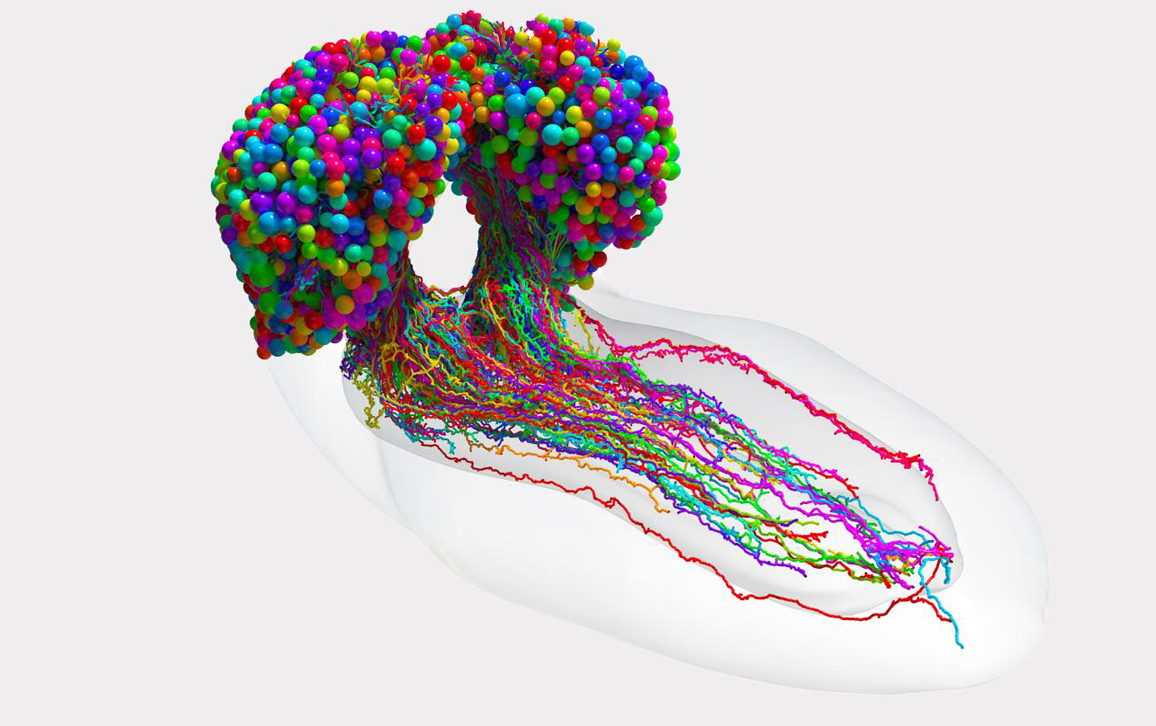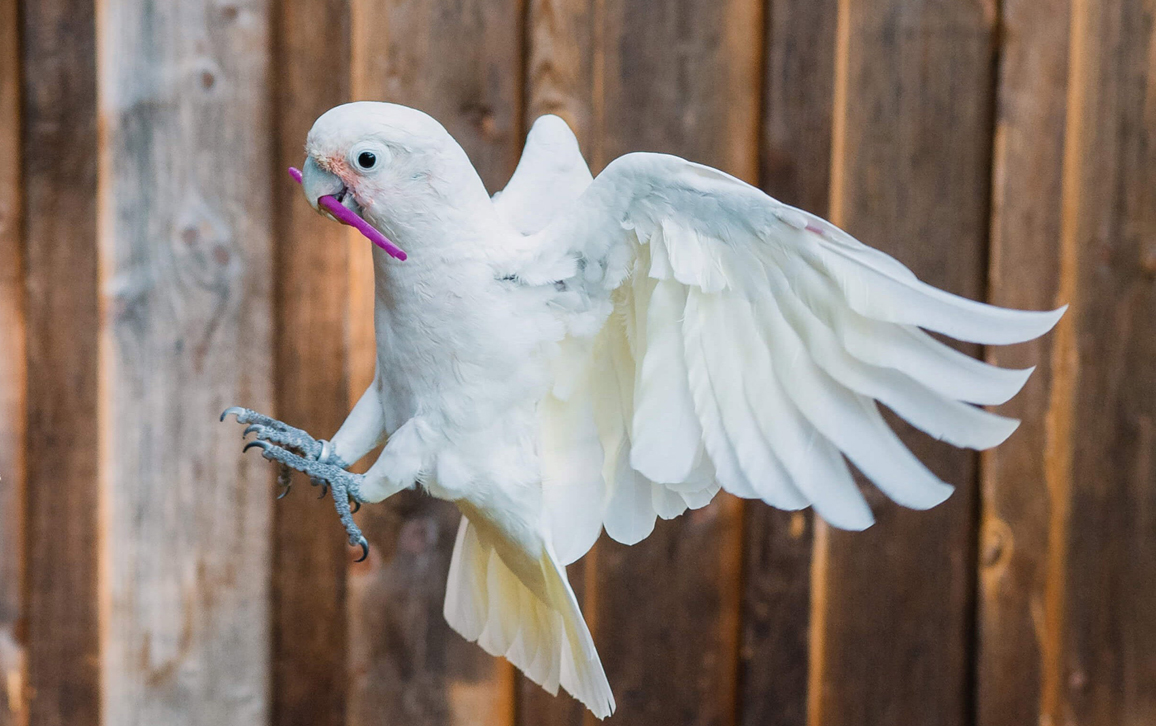
This Article From Issue
May-June 2023
Volume 111, Number 3
Page 140
In this roundup, managing editor Stacey Lutkoski summarizes notable recent developments in scientific research, selected from reports compiled in the free electronic newsletter Sigma Xi SmartBrief.

Johns Hopkins University and University of Cambridge
Mapping the Insect Brain
The pesky fruit flies circling your trash can may seem mindless, but they in fact have remarkably complex brains. An interdisciplinary team including zoologists, neuroscientists, mathematicians, and engineers has developed a complete neural wiring diagram, called a connectome, of larval fruit flies (Drosophila melanogaster). This map is a giant leap forward in brain imaging technology. Researchers have created connectomes for only three other organisms, each mapping several hundred neurons; the larval fruit fly connectome diagrams 3,016 neurons and 543,000 synapses. The team used three-dimensional electron microscopy to create the map. Although the fruit fly larval brain is a far cry from the human brain, which has approximately 100 billion neurons, the two do have some similarities, such as the capacity to learn and to make decisions. Studying the fruit fly connectome may shed light on how all brains operate.
Winding, M., et al. The connectome of an insect brain. Science 379:eadd9330 (March 10).
Extraterrestrial Origins of Life
One of the four nucleotide bases in RNA has been identified in a sample from the asteroid Ryugu. This finding strongly suggests that asteroids delivered the ingredients for life to Earth. The Japanese Aerospace Exploration Agency Hayabusa2 probe collected two samples from Ryugu in 2019, one from the surface and the other from the subsurface. Both samples contained uracil, one of the components of RNA, as well as other organic molecules, such as amino acids and nictonic acid, the main component of vitamin B3. Ryugu is a carbonaceous (or carbon-rich) asteroid, and the sample study confirmed that these asteroids have a similar composition as a rare type of meteorite called carbonaceous chondrites. These meteorites struck Earth long ago, which could have delivered prebiotic compounds to the young planet; however, it is difficult to analyze the chondrites because they have been contaminated by the biosphere. The samples from Ryugu prove that the elements of life were—and are—present in outer space.
Oba, Y., et al. Uracil in the carbonaceous asteroid (162173) Ryugu. Nature Communications 14:1292 (March 21).
Naraoka, H., et al. Soluble organic molecules in samples of the carbonaceous asteroid (162173) Ryugu. Science 379:eabn9033 (February 24).
Squid-Inspired Windows
Researchers are taking a cue from nature to create building materials that can adjust to achieve indoor climate control without running the HVAC. A team of materials scientists, engineers, and architects at the University of Toronto sought a product that could selectively filter light and heat, and they found inspiration in the multilayered skin of squid. Some species of squid can actively camouflage by distributing pigments through their skin to change colors, create patterns, and increase reflectance. The team used a similar mechanism to create a window that can independently adjust its filtration of visible light and infrared heating. This technology would allow a person to sit by the window and read a book with plenty of light without getting hot. Inspired by the squid’s skin, the researchers created a multilayered material. Each layer is microfluidic, meaning it is composed of tiny channels of liquid containing specialized pigments that either transmit, absorb, or reflect light. Adjustable pumps control the amount of pigment in each layer, so a user could fine-tune the amount and intensity of light and heat entering a building. Heating and cooling buildings is one of the most energy-intensive activities worldwide, and because that energy often derives from fossil fuels, it is a significant contributor to climate change. According to the researchers, their technology could reduce a building’s energy expenditure by more than 43 percent, which would not only reduce emissions but also put a significant dent in people’s energy bills.
Kay, R., J. A. Jakubiec, C. Katrycz, and B. D. Hatton. Multilayered optofluidics for sustainable buildings. Proceedings of the National Academy of Sciences of the U.S.A. 120(6):e2210351120 (January 30).

Thomas Suchanek / Goffin Lab
Handy-Birds Carry Tool Kits
Cockatoos have joined humans and chimpanzees as the only animals known to carry and use multiple tools. Researchers had previously observed wild Goffin’s cockatoos (Cacatua goffiniana) carrying tools, such as specialized sticks, in their native Indonesia, but it was not clear whether this was a deliberate or coincidental behavior. A team of evolutionary and behavioral biologists at the University of Vienna tested 10 captive Goffin’s cockatoos to see whether they carried and selectively used multiple tools to complete tasks. They gave the birds three distinct tools—one for wedging, another for cutting, and the third for spooning—which had to be used in sequence to open a container of cashews. The cockatoos had varying degrees of success over three tests of increasing difficulty (and one, Dolittle, chose not to participate). Seven cockatoos used tools to complete the first task, five succeeded at all three tasks, and three of the birds consistently transported their tool sets to solve the final puzzle. Although a minority of the cockatoos deliberately used a tool kit, the three that did demonstrated that the species has the capacity not just to solve a puzzle, but also to plan and execute a sequence of tasks in the correct order, which is a complex cognitive skill. The researchers next plan to explore the birds’ ability to anticipate future events and adapt to changing circumstances.
Osuna-Mascaró, A. J., M. O’Hara, R. Folkertsma, S. Tebbich, S. R. Beck, and A. M. I. Auersperg. Flexible tool set transport in Goffin’s cockatoos. Current Biology 33:849–857 (March 13).

American Scientist Comments and Discussion
To discuss our articles or comment on them, please share them and tag American Scientist on social media platforms. Here are links to our profiles on Twitter, Facebook, and LinkedIn.
If we re-share your post, we will moderate comments/discussion following our comments policy.